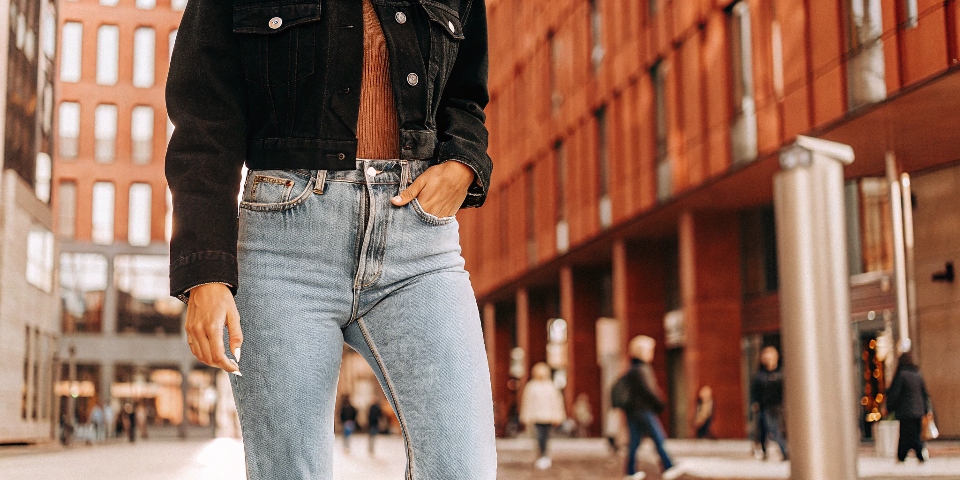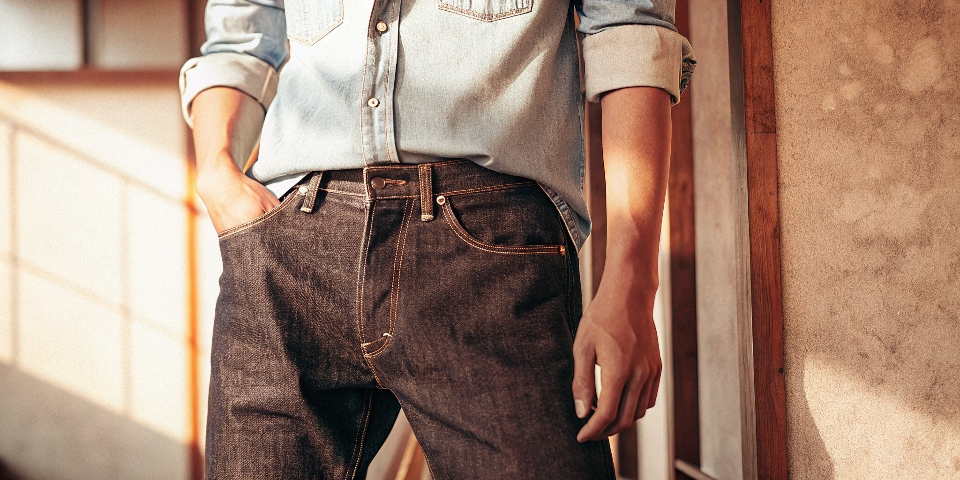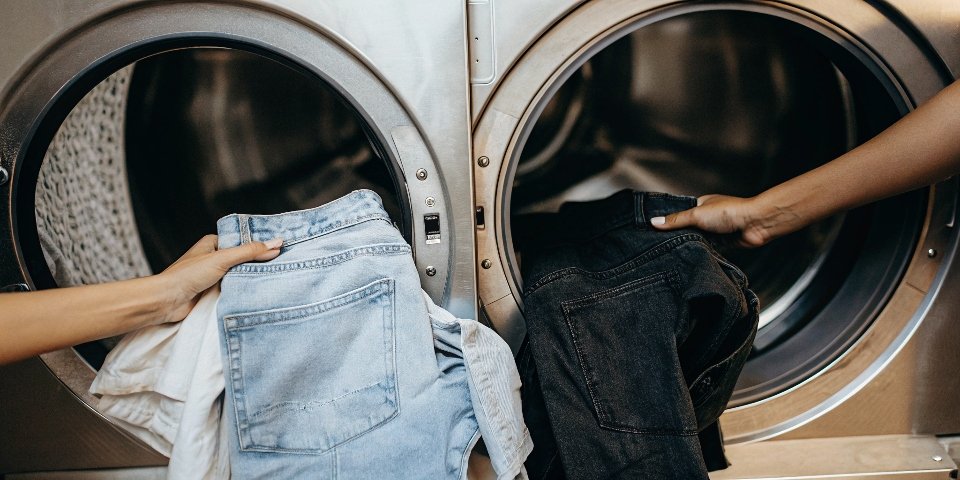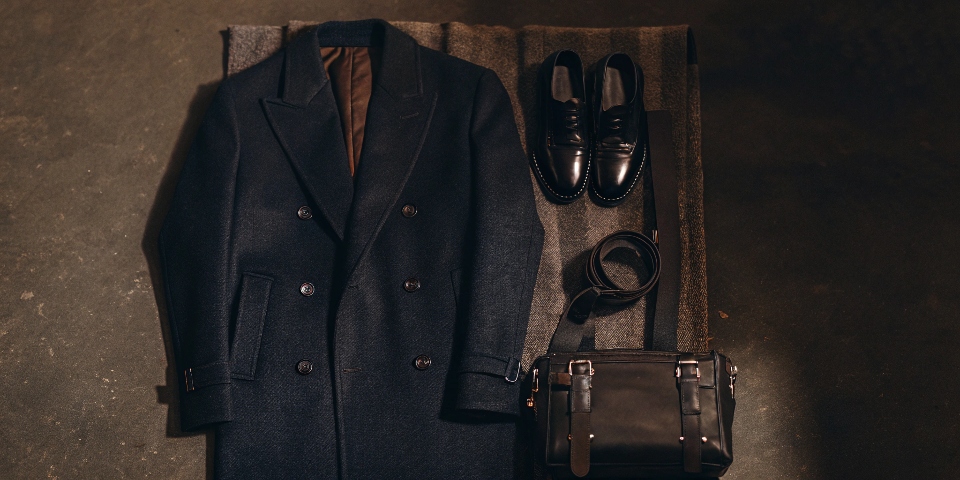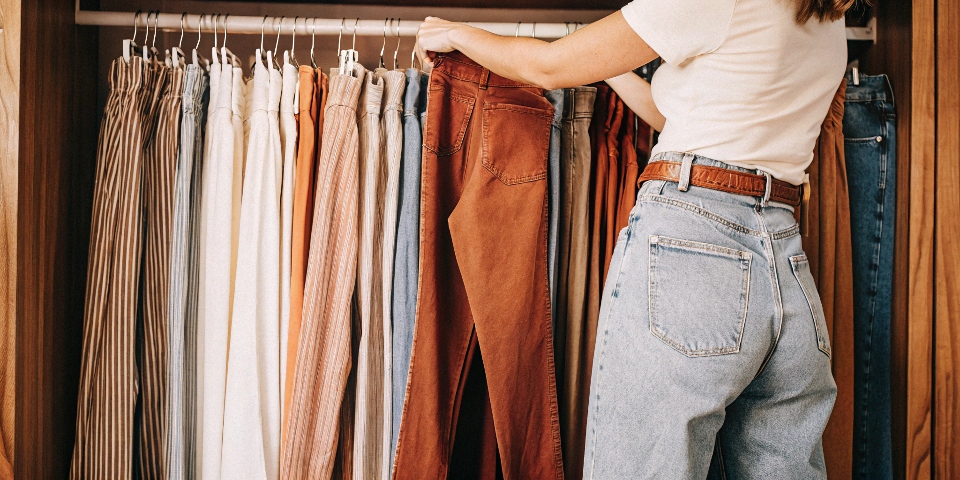You want to pair your new black denim jacket with your favorite blue jeans, but you pause. An old, unspoken fashion rule makes you wonder if it's a terrible mistake, and you worry the colors will clash.
Yes, you can absolutely wear black and blue denim together. It’s a classic, stylish combination. The key is to ensure there's a clear contrast between the black piece and the specific shade of blue you choose.
In my 20 years of making jeans at DiZNEW, I've seen every color combination imaginable. From a fabric perspective, black and blue denim are fundamentally different. Black denim is usually made with sulfur dye, while blue denim uses indigo.
Their distinct chemical makeups are what make them look so good together; they complement each other rather than competing. For designers like Dean, who live and breathe style, this combination is a reliable staple. Let me show you how to master this look and other denim pairings.
Is it okay to wear two different shades of denim?
The phrase "Canadian tuxedo" floats in your mind, making you nervous. You want to try wearing a denim jacket with jeans, but you're afraid of looking like you tried to match and failed.
Yes, wearing two different shades of denim is the best way to do it. The most important rule is to create contrast. Pair a light-wash denim shirt with dark indigo jeans for a look that is intentional and modern.
The secret to pulling off a denim-on-denim look is making it look deliberate. The easiest way to do that is by using shades that are clearly different. When the shades are too similar, it can look like a uniform or a mismatched suit. As a manufacturer, we produce dozens of different washes, and the goal is to give stylists and designers like Dean a full palette to work with.
Here’s how to think about it:
- High Contrast is Safe: The biggest difference in shades creates the strongest look. A worn, light-wash jacket over dark, raw denim jeans is a classic combination that always works. Tthe reverse is also true.
- Black and Blue: This is the easiest and a foolproof version of the denim-on-denim look. Since black is a neutral color, it provides instant contrast to any shade of blue denim, from sky blue to deep indigo.
- Monochromatic Tones: If you want to wear two blue items, ensure the contrast is obvious. A chambray shirt with dark jeans is great. Wearing a medium-wash jacket with a different medium-wash jean is where it gets risky.
| Combination | Style Rating | Why It Works (or Doesn't) |
|---|---|---|
| Black Denim Jacket + Blue Jeans | Excellent | Black is a neutral that grounds any shade of blue. |
| Light Blue Jacket + Dark Blue Jeans | Excellent | High contrast makes the pairing look intentional. |
| White Denim Jacket + Blue Jeans | Excellent | White provides a crisp, clean contrast. |
| Medium Blue Jacket + Medium Blue Jeans | Risky | Can look like a "failed match" if shades are too close. |
Is it okay to wash black jeans and blue jeans together?
It's laundry day, and you're tempted to throw all your jeans in one load to save time. But you're worried that the colors might bleed, potentially ruining your favorite pairs.
No, you should not wash new black and blue jeans together. Blue indigo dye is very unstable and will bleed, which can stain or discolor your black jeans. Always wash new denim separately for the first few washes.
This is a question I can answer with absolute certainty from a manufacturing standpoint. At the factory, one of our key tests is for "color fastness1," which is how well a dye stays on the fabric. Blue jeans, especially new dark ones, fail this test spectacularly.
That's actually part of their charm. The indigo dye sits on the surface of the cotton fibers and is designed to rub off over time, creating a unique fade. This is wonderful for how your jeans look, but it's terrible for your laundry. Black sulfur dyes are generally more stable, but they can still be affected by loose indigo dye2 in the wash water.
The blue dye can transfer onto the black denim, leaving it looking muddy and uneven. After many, many washes, when the dye has stabilized, the risk is lower. But to be safe, I always recommend washing them separately or with other very dark colors only.
Is it okay to wear black and blue together?
You might have heard an old-fashioned rule that says black and blue should never be worn together. This outdated advice might be holding you back from a truly classic and sophisticated color combination.
Yes, wearing black and blue together is a sign of sophisticated style. From a navy blazer with black pants to a blue shirt with black jeans, this combination is a modern staple. It always looks sharp and intentional.
The old rule against mixing black and blue3 came from a time where it was difficult to tell dark navy from black in dim lighting. People worried it would look like they got dressed in the dark and made a mistake.
Today, that rule is completely gone. In fact, stylists and designers now see it as a very chic pairing. The key is making it look deliberate. The combination works best when the blue is clearly blue and not a shade so dark it could be mistaken for black. Mixing textures is another great way to elevate the look.
For example, pairing a soft blue cashmere sweater with black leather pants or a crisp blue cotton shirt with black denim. The difference in texture adds depth and shows that the pairing was a conscious style choice, not an accident. It's a confident combination that signals you understand color and style.
What colors should I not wear with blue jeans?
Blue jeans are the foundation of your wardrobe, but you often get stuck wearing the same white t-shirt. You're hesitant to try other colors because you're worried about creating a clashing outfit.
Blue jeans are very versatile, but you should avoid wearing a shirt that's almost the exact same shade of blue. Also, be careful with certain shades of brown or grey that can look muddy against the blue.
Think of your blue jeans as the neutral base of your outfit. They are incredibly forgiving and work with almost anything. However, there are a couple of pitfalls to avoid. The main one is the "almost match."
A blue shirt that is only one or two shades different from your blue jeans4 can look very awkward. It creates visual confusion and looks like a mistake. Instead, you either want a strong contrast (like a very light blue shirt with dark jeans) or a completely different color.
Some colors are also trickier than others. While a rich tan or a deep chocolate brown can look great with blue jeans, a flat, medium brown can sometimes look dull. The same goes for grey; dark charcoal is great, but some mid-tone greys can get lost.
Here is a simple guide for can't-miss pairings:
| Color Category | Winning Colors | Why They Work |
|---|---|---|
| Neutrals | White, Black, Charcoal | They are classic and create a clean, sharp look. |
| Warm Tones | Red, Burnt Orange, Mustard | They are opposites to blue and create a bold contrast. |
| Earth Tones | Olive Green, Cream, Tan | These colors are complementary and create a relaxed feel. |
Conclusion
Feel confident wearing black and blue denim together for a stylish look. Just remember to create contrast in your outfit and always wash them separately to protect the colors and fabric.
-
Understanding color fastness is crucial for maintaining the quality of your fabrics and ensuring longevity in your garments. ↩
-
Exploring the properties of indigo dye can help you appreciate its unique characteristics and the care needed for dyed fabrics. ↩
-
Explore this link to understand how modern fashion embraces the black and blue combination, showcasing its chic appeal. ↩
-
Explore this link for creative outfit ideas that highlight the versatility of blue jeans in fashion. ↩

